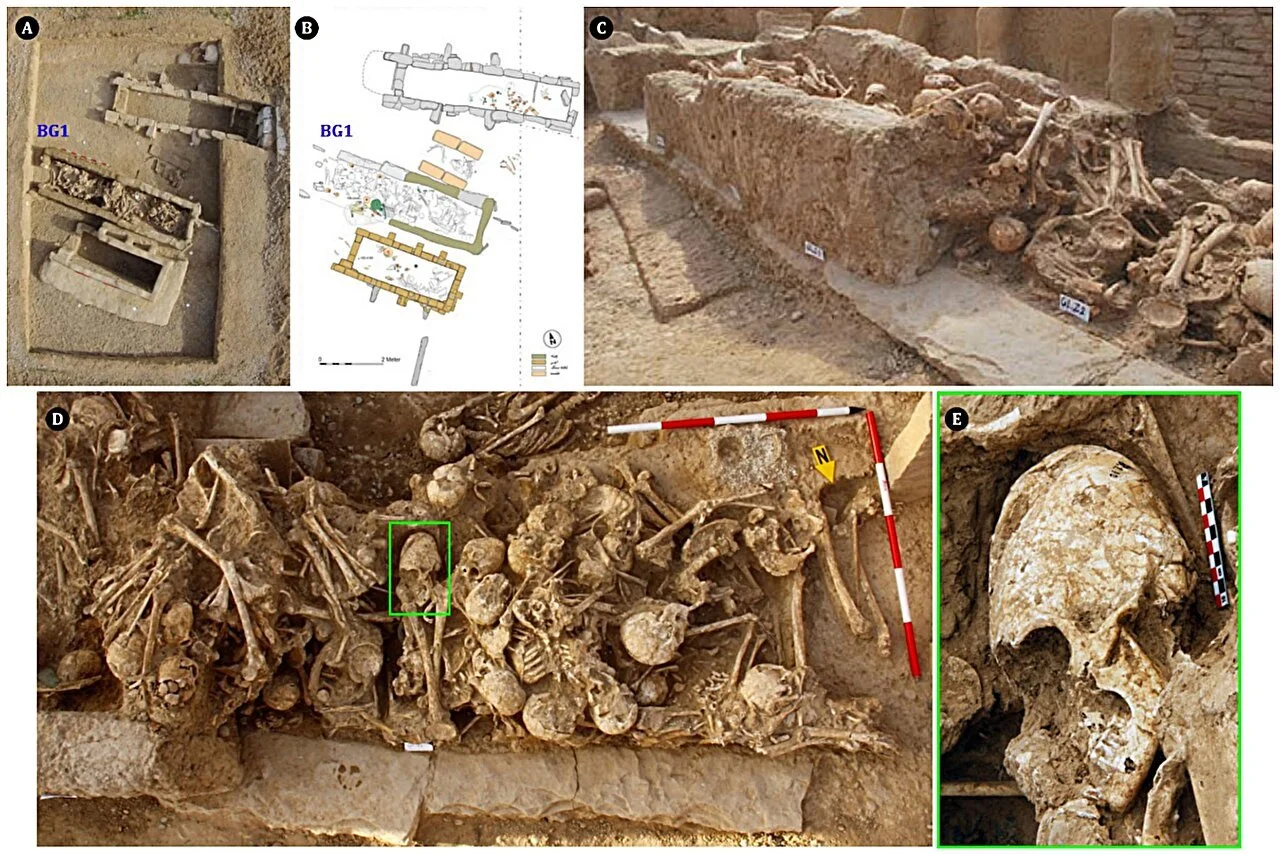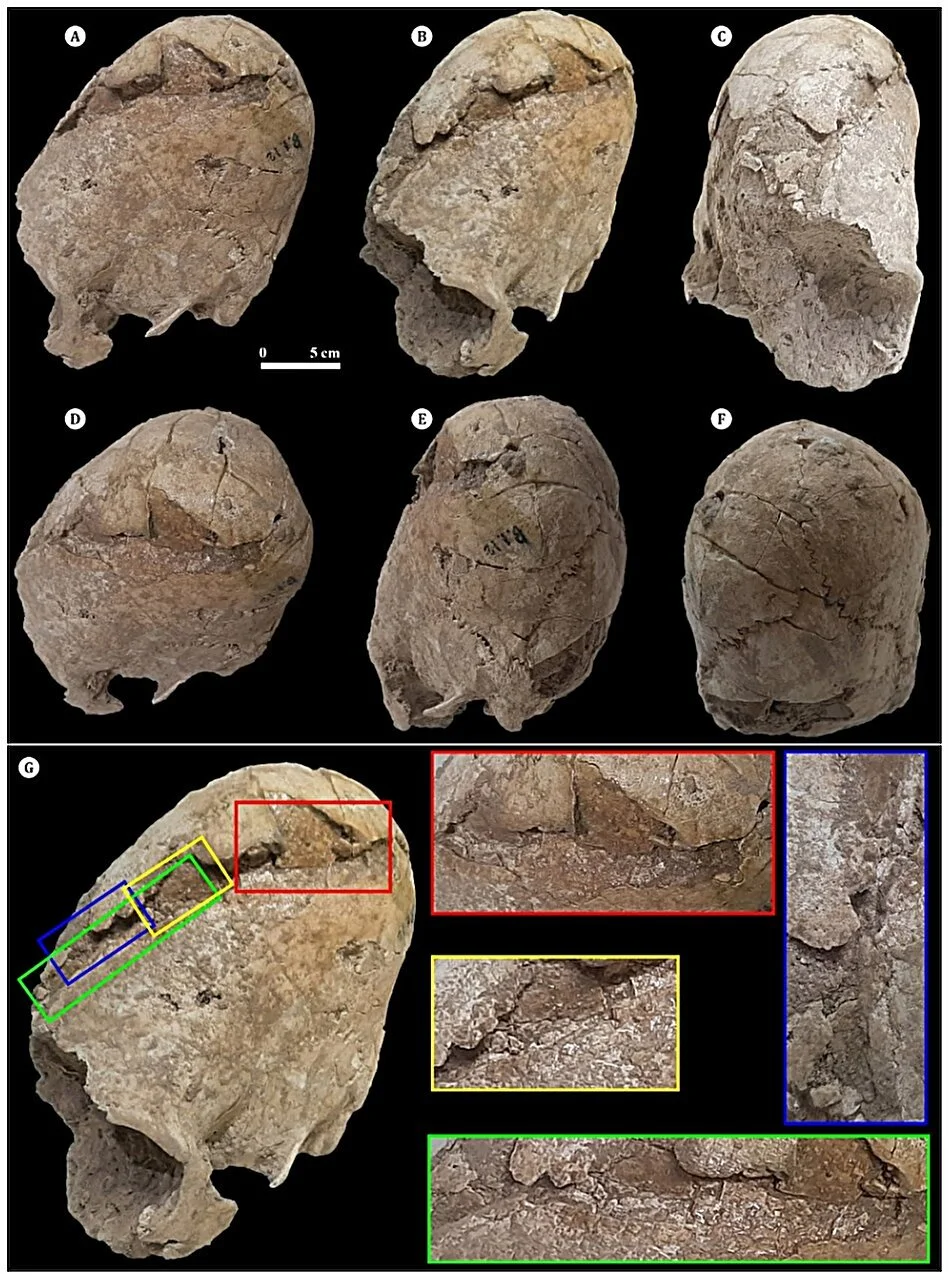In the dusty soil of an ancient cemetery in western Iran, archaeologists have uncovered the remains of a teenage girl whose life—and death—offer a rare and haunting glimpse into a 6,200-year-old world.
Her skull was intentionally reshaped during childhood, forming a distinctive cone shape through the ancient practice of cranial modification. But CT scans revealed something even more chilling: a massive, fatal skull fracture. Researchers now believe she died from a brutal blow to the head.
An Extraordinary Find at Chega Sofla
The discovery was made by archaeologists Mahdi Alirezazadeh and Hamed Vahdati Nasab, who have spent over a decade excavating the Chega Sofla site, a prehistoric cemetery located in Iran’s Deh Luran Plain. The site has yielded hundreds of burials—some solitary, others communal. Some include entire families. A few feature signs of intentional cranial deformation, a cultural practice seen in various ancient civilizations around the world.
But one grave—labeled BG1.12—stood out.
There, the team unearthed the skull of a young girl, estimated to be under 20 years old when she died. Her head had been tightly bound with cloth or wooden boards during early childhood, forcing her skull to grow in a long, tapered shape—a form possibly associated with beauty, identity, or social status in her community.
Head Binding: A Painstaking Practice
Cranial modification was widespread in many prehistoric societies and was often performed on children while their skulls were still soft and malleable. The reasons varied—from aesthetic ideals to social hierarchy to spiritual beliefs. Interestingly, the practice has been observed more often in female remains than male, possibly reflecting gendered traditions or expectations.
In this case, the girl’s modified skull had one dangerous side effect: thinner cranial bones. This left her far more vulnerable to traumatic injury.
A Violent End
CT imaging of the skull revealed a devastating fracture starting at the front of the skull and stretching diagonally to the left side of the parietal bone. The damage showed no signs of healing, indicating it was perimortem—occurring at or just before the time of death.
Though the blow did not fully penetrate the skull, the bone’s reduced thickness meant that the force likely caused severe brain trauma. The researchers suggest it was inflicted by a broad-edged weapon, such as a blade, club, or axe.
Only the girl's skull has been recovered so far, as the grave was densely packed with remains. Still, her head alone tells a powerful story of pain, identity, and perhaps violence within her community.
A Tomb of Many Stories
The Chega Sofla site continues to surprise archaeologists. Among its most striking features is the oldest known brick tomb, found near the girl's burial—a sign of architectural sophistication and funerary care.
With each new discovery, researchers are learning more about the rituals, social structures, and cultural practices of this ancient population. The teenage girl with the cone-shaped skull is just one chapter in that evolving story, but hers is among the most vivid: a young life shaped—literally and figuratively—by tradition, and tragically ended by violence.








